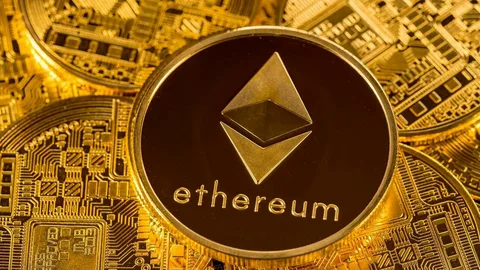Ethereum Classic (ETC) has continued to maintain a unique position in the blockchain industry, distinguishing itself from Ethereum (ETH) by adhering to the principle of immutability. As smart contracts gain more traction within the Ethereum Classic ecosystem, there is increasing speculation about their potential impact on price predictions. This article explores Ethereum Classic’s smart contracts, their utility, adoption rate, and how they could shape the future price of ETC.
Understanding Ethereum Classic and Smart Contracts
Ethereum Classic emerged from the hard fork of Ethereum in 2016 following the DAO hack. Unlike Ethereum, which chose to reverse the hack and refund affected investors, Ethereum Classic maintained the original ledger, upholding the blockchain principle of immutability. This decision resonated with purists who believe in decentralized governance and code permanence.
Smart contracts are self-executing programs that run on the blockchain and facilitate transactions without intermediaries. Ethereum Classic, like Ethereum, supports the Ethereum Virtual Machine (EVM), allowing developers to deploy decentralized applications (dApps) and execute complex financial transactions. However, its smart contract adoption has been relatively slower due to security concerns and network constraints.
How Ethereum Classic Smart Contracts Impact Price Predictions
1. Increased Utility and Adoption
Smart contracts play a crucial role in increasing the utility of Ethereum Classic. As more developers build dApps, DeFi platforms, and NFT projects on the ETC network, demand for its native token grows. This increased usage leads to higher transaction volumes, which could positively influence ETC’s price. Historically, blockchain networks with robust smart contract functionality such as Ethereum and Binance Smart Chain—have seen significant value appreciation due to increased adoption.
2. Network Security and Reliability
Security remains a critical concern for Ethereum Classic. The network has suffered several 51% attacks in the past, raising doubts about its reliability. However, the recent implementation of security enhancements, such as the MESS (Modified Exponential Subjective Scoring) protocol, has made the network more resilient. As confidence in Ethereum Classic’s security grows, developers may be more inclined to deploy smart contracts, leading to greater adoption and potential price appreciation.
3. Institutional and Retail Investor Interest
Institutional investors and retail traders often assess the viability of blockchain projects before investing. If Ethereum Classic can demonstrate sustainable growth in smart contract deployment and dApp development, it may attract more investors. The integration of smart contracts allows for DeFi applications, lending protocols, and NFT marketplaces, making ETC a more attractive investment option. As institutional interest increases, so does the likelihood of price appreciation.
4. Competition with Ethereum and Other Smart Contract Platforms
One of the key challenges for Ethereum Classic is competition. Ethereum, Solana, Cardano, and other smart contract platforms have already established themselves with strong developer ecosystems. Ethereum Classic must offer unique advantages—such as immutability and low transaction fees—to differentiate itself. If ETC successfully positions itself as a viable alternative, it could see greater adoption, positively affecting price predictions.
5. Market Sentiment and Speculation
Cryptocurrency prices are highly influenced by market sentiment and speculation. The announcement of significant smart contract developments on Ethereum Classic could trigger bullish sentiment, driving short-term price rallies. Conversely, negative news—such as security breaches or lack of developer interest—could suppress prices. Traders and investors closely monitor technological advancements, partnerships, and adoption rates to gauge future price movements.
6. Network Upgrades and Future Developments
Ethereum Classic continues to evolve with upgrades aimed at enhancing scalability, security, and smart contract functionality. If the network implements innovations such as layer-2 solutions or interoperability features, it could boost confidence and attract more users. Continuous development efforts signal long-term commitment, which is a crucial factor in price predictions.
Challenges and Risks
Despite its potential, Ethereum Classic faces several challenges that could impact its price predictions:
- Security concerns: Past 51% attacks have affected investor confidence, although recent security upgrades aim to mitigate risks.
- Developer adoption: ETC’s ecosystem is smaller compared to Ethereum, limiting the number of available dApps and smart contracts.
- Regulatory uncertainty: As governments regulate cryptocurrencies and smart contracts, compliance issues could impact ETC’s growth.
- Market volatility: Like all cryptocurrencies, Ethereum Classic is subject to price fluctuations influenced by external factors such as macroeconomic trends and investor sentiment.
Conclusion: What’s Next for ETC?
Ethereum Classic’s integration of smart contracts holds significant potential for its future price trajectory. As adoption increases and the network becomes more secure, ETC could experience higher demand, leading to potential price appreciation. However, competition, security concerns, and regulatory uncertainties remain key challenges.
For investors and traders, monitoring network developments, security enhancements, and institutional interest will be crucial in assessing Ethereum Classic’s long-term viability. While smart contracts could provide a bullish case for ETC, prudent risk management is essential given the volatile nature of the crypto market.
Ethereum Classic may never surpass Ethereum in terms of adoption, but its commitment to immutability and decentralization ensures it will remain a relevant player in the blockchain space. The extent to which smart contracts shape its price predictions will depend on developer interest, security upgrades, and overall market dynamics.
Explore more articles on: https://empireadda.com/



